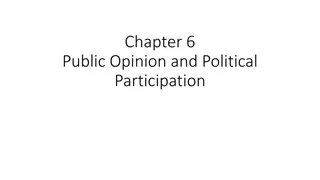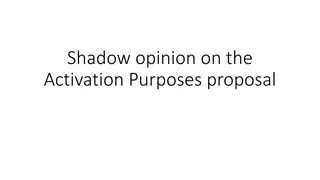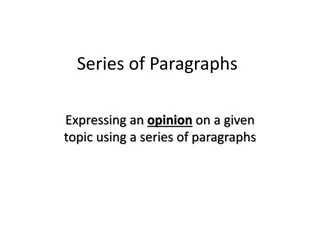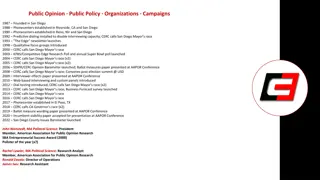
Fact and Opinion in Opinion Writing
Learn the differences between facts and opinions, how opinions are formed based on logic, ethics, or emotions, and how to effectively combine logic, ethics, and emotions in writing. Discover the importance of considering all aspects for balanced thinking and decision-making.
Download Presentation

Please find below an Image/Link to download the presentation.
The content on the website is provided AS IS for your information and personal use only. It may not be sold, licensed, or shared on other websites without obtaining consent from the author. If you encounter any issues during the download, it is possible that the publisher has removed the file from their server.
You are allowed to download the files provided on this website for personal or commercial use, subject to the condition that they are used lawfully. All files are the property of their respective owners.
The content on the website is provided AS IS for your information and personal use only. It may not be sold, licensed, or shared on other websites without obtaining consent from the author.
E N D
Presentation Transcript
Fact and Opinion Opinion Writing
Facts Facts are statements that are true. For example, we can use a thermometer to determine the temperature in this room; that is a fact. Whether that temperature is is too hot, too cold or just right is a matter of opinion.
Opinions Opinions are statements that cannot be proven true or false. They usually involve some form of value judgment, such as good, bad, helpful, dangerous, problematic, beautiful, etc. People with the same information can disagree.
Logos, ethos, pathos Opinions tend to be based on one of three types of thinking: logos: appeal to logic ethos: appeal to ethics, morality pathos: appeal to emotions
Logos An appeal to logic means showing an opinion is the most logical or practical. Look for evidence of the results or likely results of the opinion, and as you gather facts, try to look at them from an unemotional, unbiased way.
Ethos Ethos is an appeal to ethics or morality. It takes values or big ideas, like freedom, equality, education, helping others, and applies them to the facts. Students in a situation may value their freedom more, while teachers see maintaining order as more important. With ethos, you have to explain why your values are important and how they apply to the facts.
Pathos Pathos tries to get the reader to have empathy for people affected by the opinion topic. One of the best ways to bring in pathos is to use true stories with emotional pull.
Combining logos, ethos, pathos With any big decision, it is important to look at what is logical, what is right and what you feel about it. While sometimes it s important to focus on one aspect, completely separating it from the others can lead to unbalanced thinking and writing.






















